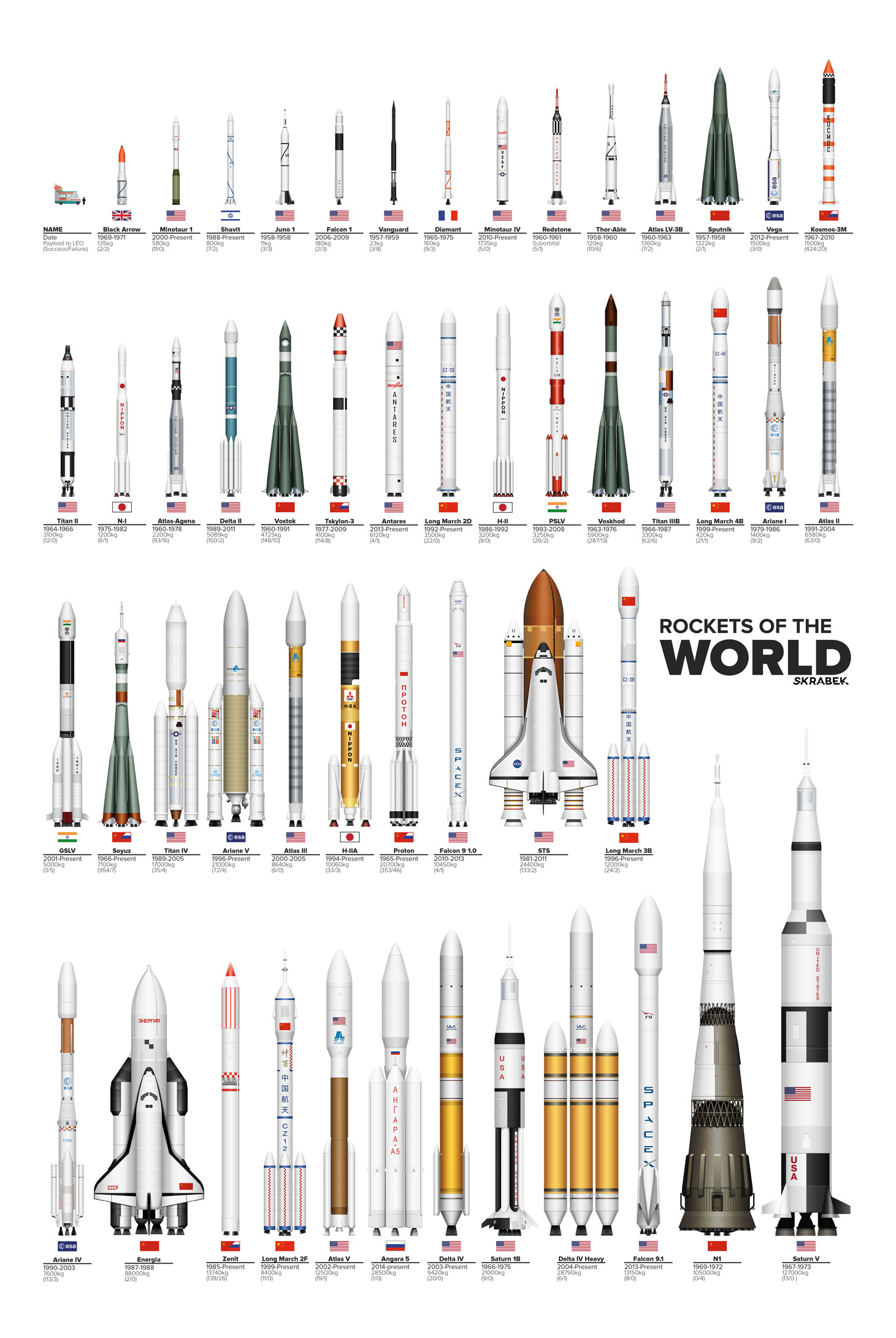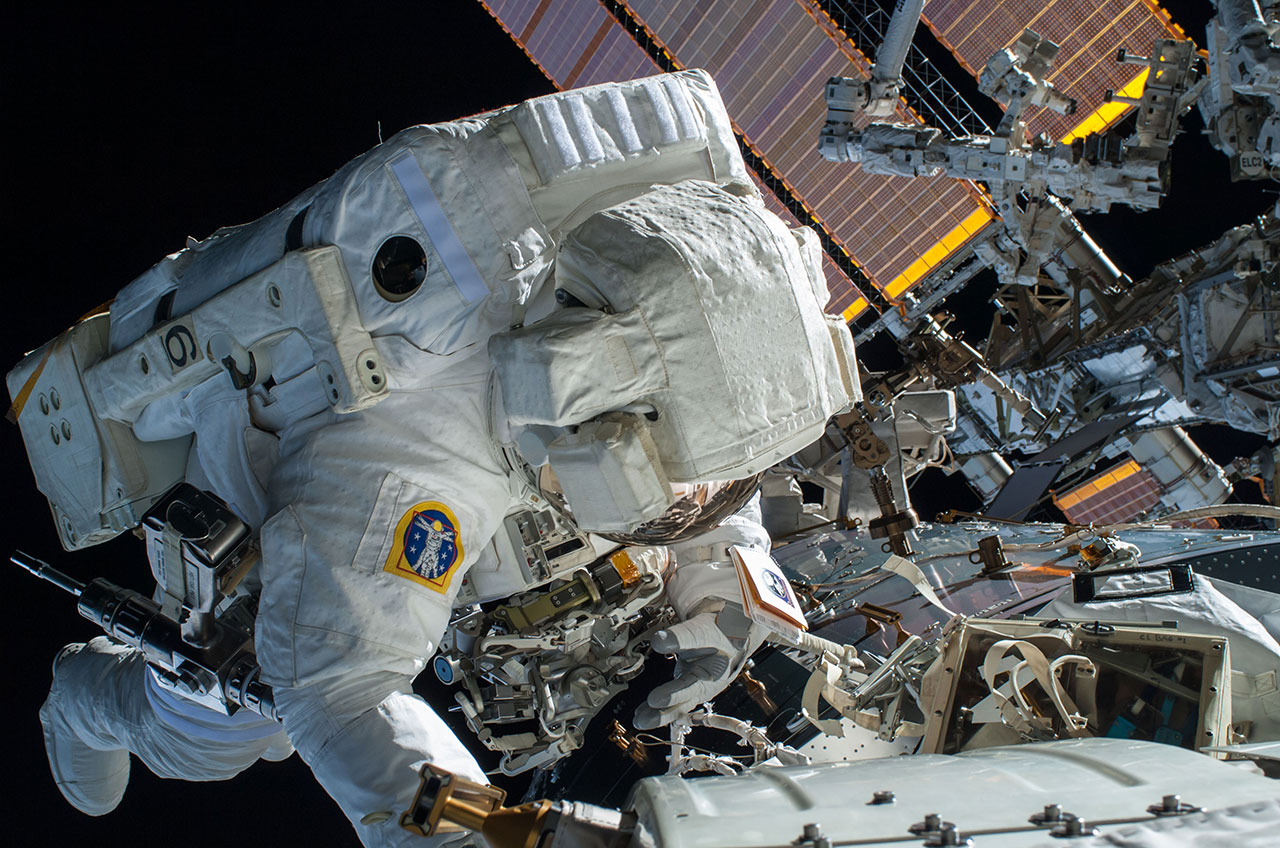-
SCAM WARNING! See how this scam works in Classifieds.
You are using an out of date browser. It may not display this or other websites correctly.
You should upgrade or use an alternative browser.
You should upgrade or use an alternative browser.
Science and Souls (for geeks and spiritual explorers)
- Thread starter Bob Loblaw
- Start date
t-dub
Vapor Sloth
JPL releases radar images of the mountain, complete with its own moon, that flew by Earth yesterday.
"Scientists working with NASA's 230-foot-wide (70-meter) Deep Space Network antenna at Goldstone, California, have released the first radar images of asteroid 2004 BL86. The images show the asteroid, which made its closest approach on Jan. 26, 2015 at 8:19 a.m. PST (11:19 a.m. EST) at a distance of about 745,000 miles (1.2 million kilometers, or 3.1 times the distance from Earth to the moon), has its own small moon."

"Scientists working with NASA's 230-foot-wide (70-meter) Deep Space Network antenna at Goldstone, California, have released the first radar images of asteroid 2004 BL86. The images show the asteroid, which made its closest approach on Jan. 26, 2015 at 8:19 a.m. PST (11:19 a.m. EST) at a distance of about 745,000 miles (1.2 million kilometers, or 3.1 times the distance from Earth to the moon), has its own small moon."

t-dub
Vapor Sloth
Holy reusable rockets!!! Elon Musk is out of his fucking mind I LOVE this guy!!! Check out this animation of the new Falcon Heavy rocket. We all know the single stage rocket hit the autonomous spaceport drone ship, and the test rockets have landed safely, so the stage landings you see depicted here will be science fact very shortly. Its not IF . . . its WHEN. Behold the future of SpaceX . . . 
Crank the volume. Go SpaceX!!!

Crank the volume. Go SpaceX!!!
Quetzalcoatl
DEADY GUERRERO/DIRT COBAIN/GEORGE KUSH
Every time I see space stuff in here I can't help but think...
M A R S
M A R S
t-dub
Vapor Sloth
SpaceX is finishing up preparations for a major test of a rocket-powered abort system for the company’s new Dragon crew ferry spacecraft, targeting launch from Cape Canaveral in March after a pair of Falcon 9 missions in February.
http://spaceflightnow.com/2015/01/30/spacex-nears-pad-abort-test-for-human-rated-dragon-capsule/

http://spaceflightnow.com/2015/01/30/spacex-nears-pad-abort-test-for-human-rated-dragon-capsule/

t-dub
Vapor Sloth
Back to the Russians . . . Looks like they fixed their Proton rocket problems considering the last one fliped sideways and exploded above the launch pad. Here is a video from the Baikonur Cosmodrome (the busiest spaceport on Earth) showing the Proton lifting off yesterday . . . 

t-dub
Vapor Sloth
ok folks, this post has been years in the making. Some of you know we have a space probe approaching Pluto called New Horizons. Well back in the day when they were constructing the craft there was a program where you could get your name encoded on a gold CD that is actually on the space craft. So t-dub and about 434,000 other people are flying towards Pluto right now . . .  The navigation cams are up and the first images are coming in of Pluto and its moon Charon. These first images are navigation, not science, so the quality will improve.
The navigation cams are up and the first images are coming in of Pluto and its moon Charon. These first images are navigation, not science, so the quality will improve.

---
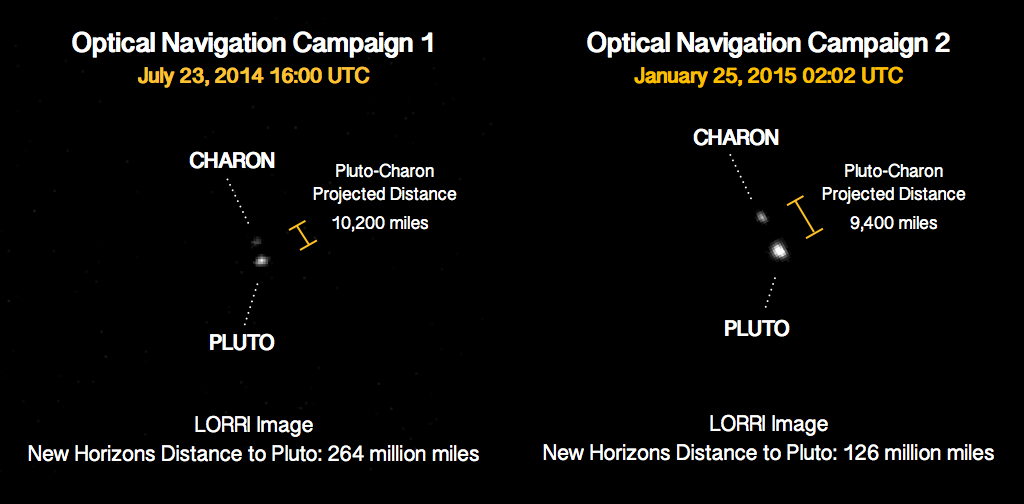
---
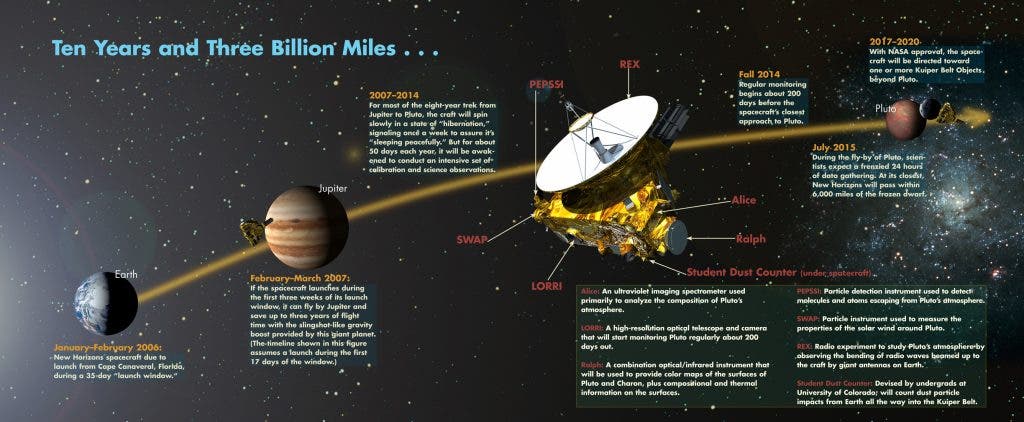
 The navigation cams are up and the first images are coming in of Pluto and its moon Charon. These first images are navigation, not science, so the quality will improve.
The navigation cams are up and the first images are coming in of Pluto and its moon Charon. These first images are navigation, not science, so the quality will improve.
---

---

t-dub
Vapor Sloth
Also we have another probe, called Dawn, investigating Vesta and Ceres, the largest object in the asteroid belt.
NASA's Dawn spacecraft, on approach to dwarf planet Ceres, has acquired its latest and closest-yet snapshot of this mysterious world. The image of Ceres, taken on Feb. 4, 2015, from a distance of about 90,000 miles (145,000 kilometers), is available at:
http://www.jpl.nasa.gov/spaceimages/details.php?id=pia19174
http://www.jpl.nasa.gov/spaceimages/details.php?id=pia19179
At a resolution of 8.5 miles (14 kilometers) per pixel, the pictures represent the sharpest images to date of Ceres.
This animation showcases a series of images NASA's Dawn spacecraft took on approach to Ceres on Feb. 4, 2015 at a distance of about 90,000 miles (145,000 kilometers) from the dwarf planet. These latest pictures of Ceres are the sharpest to date, at a resolution of 8.5 miles (14 kilometers) per pixel.
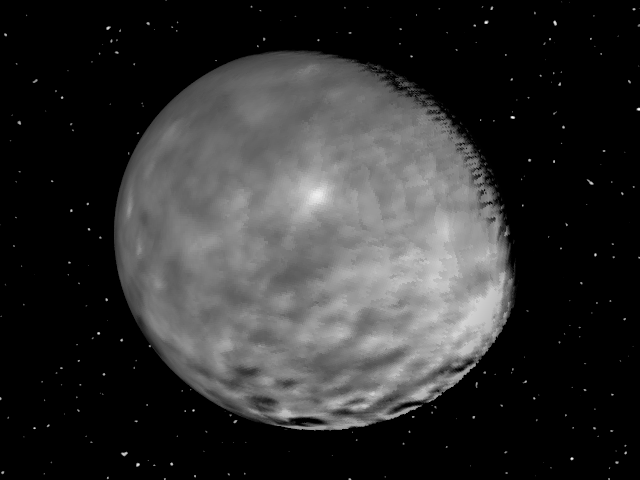
---

---
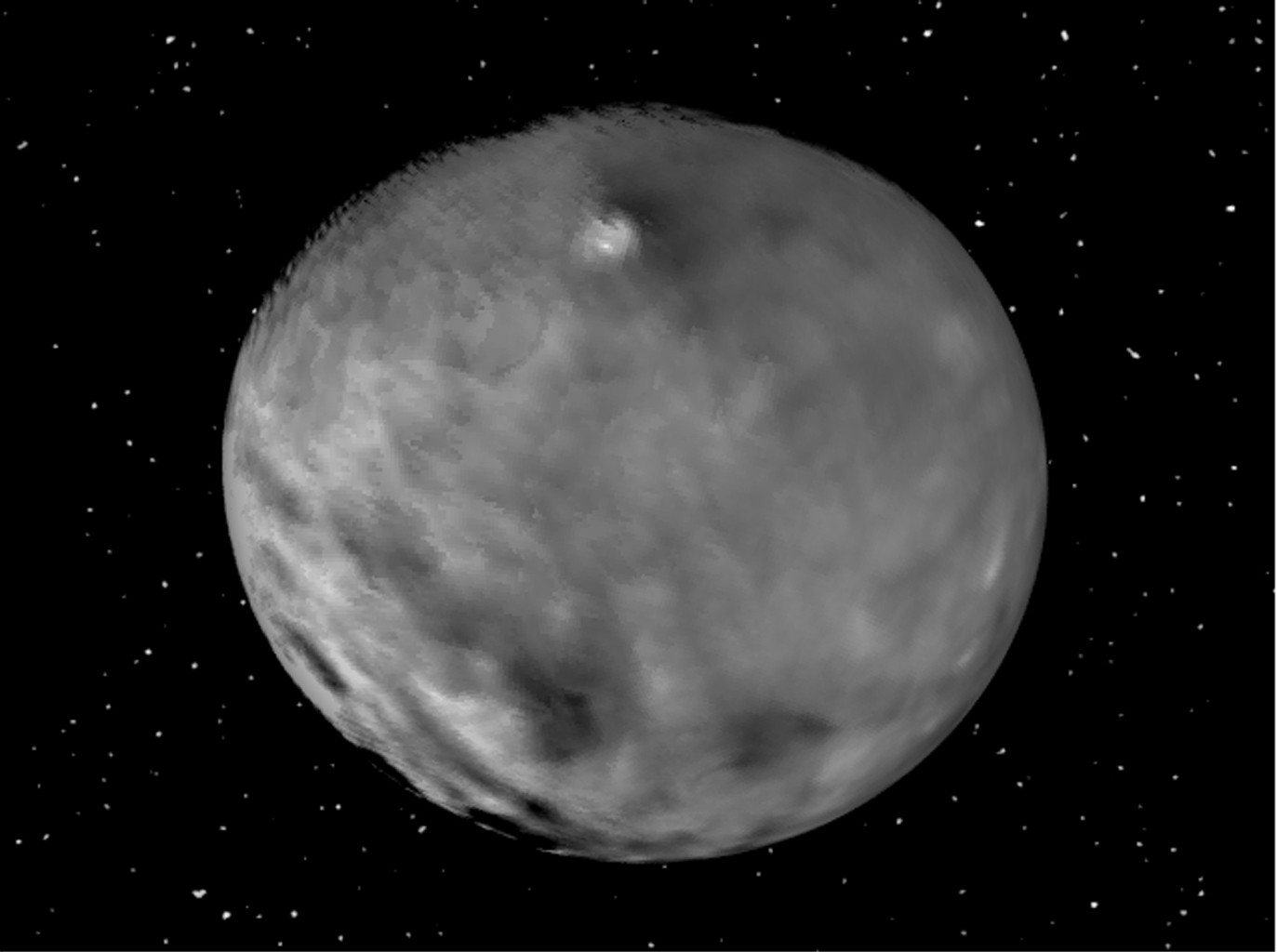
NASA's Dawn spacecraft, on approach to dwarf planet Ceres, has acquired its latest and closest-yet snapshot of this mysterious world. The image of Ceres, taken on Feb. 4, 2015, from a distance of about 90,000 miles (145,000 kilometers), is available at:
http://www.jpl.nasa.gov/spaceimages/details.php?id=pia19174
http://www.jpl.nasa.gov/spaceimages/details.php?id=pia19179
At a resolution of 8.5 miles (14 kilometers) per pixel, the pictures represent the sharpest images to date of Ceres.
This animation showcases a series of images NASA's Dawn spacecraft took on approach to Ceres on Feb. 4, 2015 at a distance of about 90,000 miles (145,000 kilometers) from the dwarf planet. These latest pictures of Ceres are the sharpest to date, at a resolution of 8.5 miles (14 kilometers) per pixel.

---

---

t-dub
Vapor Sloth
From NASA HelioPhysics a 5 year time lapse of our sun. The movie images were taken one image every 8 hours beginning in 2010. If you compare the Sun at the beginning of the movie with the end, you can see the slow shifting of sunspots/flares from higher to equatorial latitudes, as is normal as the solar cycle ramps up to solar maximum and beyond.
And in other news Rosetta is firing some amazing images of Comet 67P/Churyumov-Gerasimenko back to Earth. Rosetta is currently moving closer to the comet as it prepares for a close flyby that will take it a little more than 3.5 miles from the nucleus on Sunday.
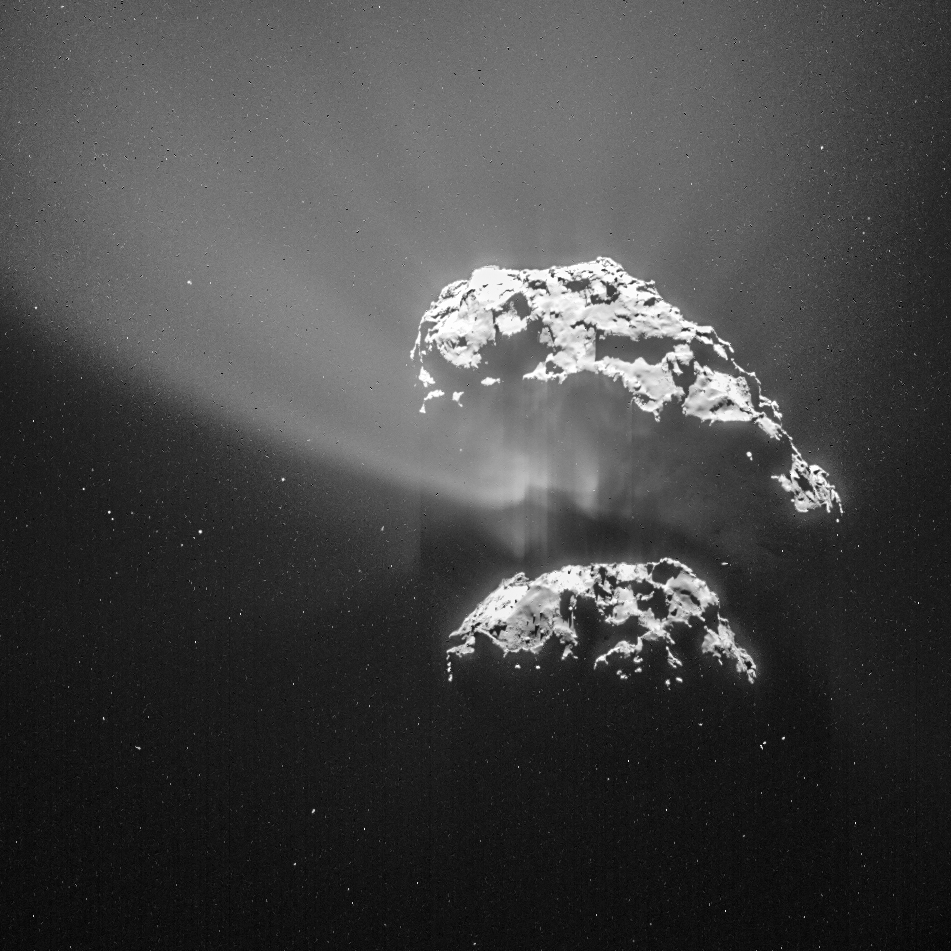
And in other news Rosetta is firing some amazing images of Comet 67P/Churyumov-Gerasimenko back to Earth. Rosetta is currently moving closer to the comet as it prepares for a close flyby that will take it a little more than 3.5 miles from the nucleus on Sunday.

t-dub
Vapor Sloth
Hmmmm . . . this is interesting. This image was taken by NASA's Dawn spacecraft of dwarf planet, and largest object in the asteroid belt, Ceres on Feb. 19 from a distance of nearly 29,000 miles (46,000 kilometers). It shows that the brightest spot on Ceres has a dimmer companion, which apparently lies in the same basin. Also, below, Ceres comes into view.
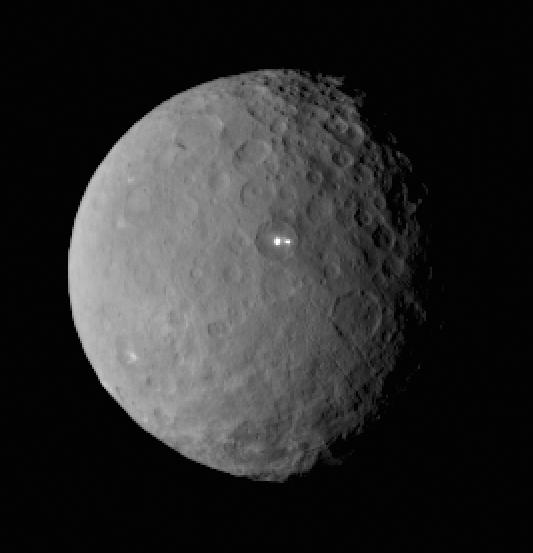
--- Feb 25 view of Ceres on approach


--- Feb 25 view of Ceres on approach

t-dub
Vapor Sloth
Drilling on Mars. Interestingly enough only the lowest drill speed is necessary. Scientists, whoever they are, think that the lower gravity makes the rocks less dense. How the IQ of rocks applies here is not obvious to me . . .  The lower density might come into play when constructing enclosures for future settlers.
The lower density might come into play when constructing enclosures for future settlers.
Below that . . . selfie!
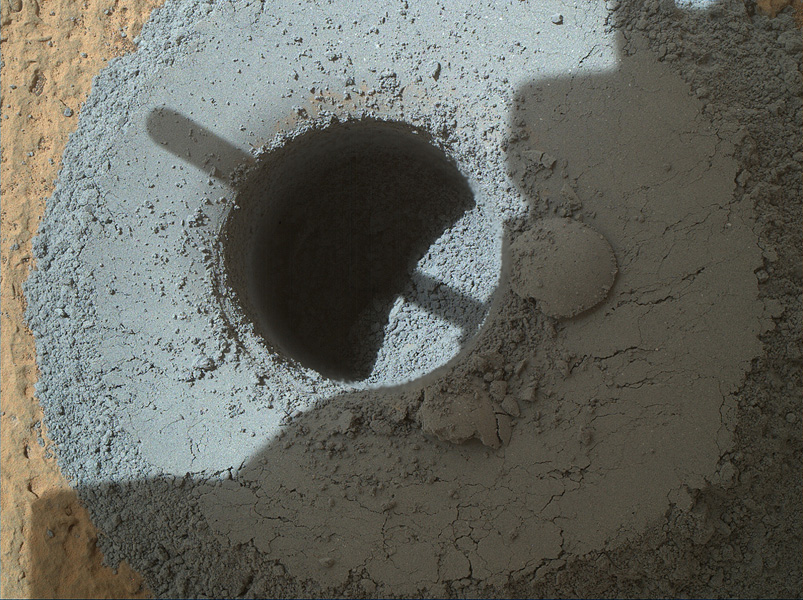
---
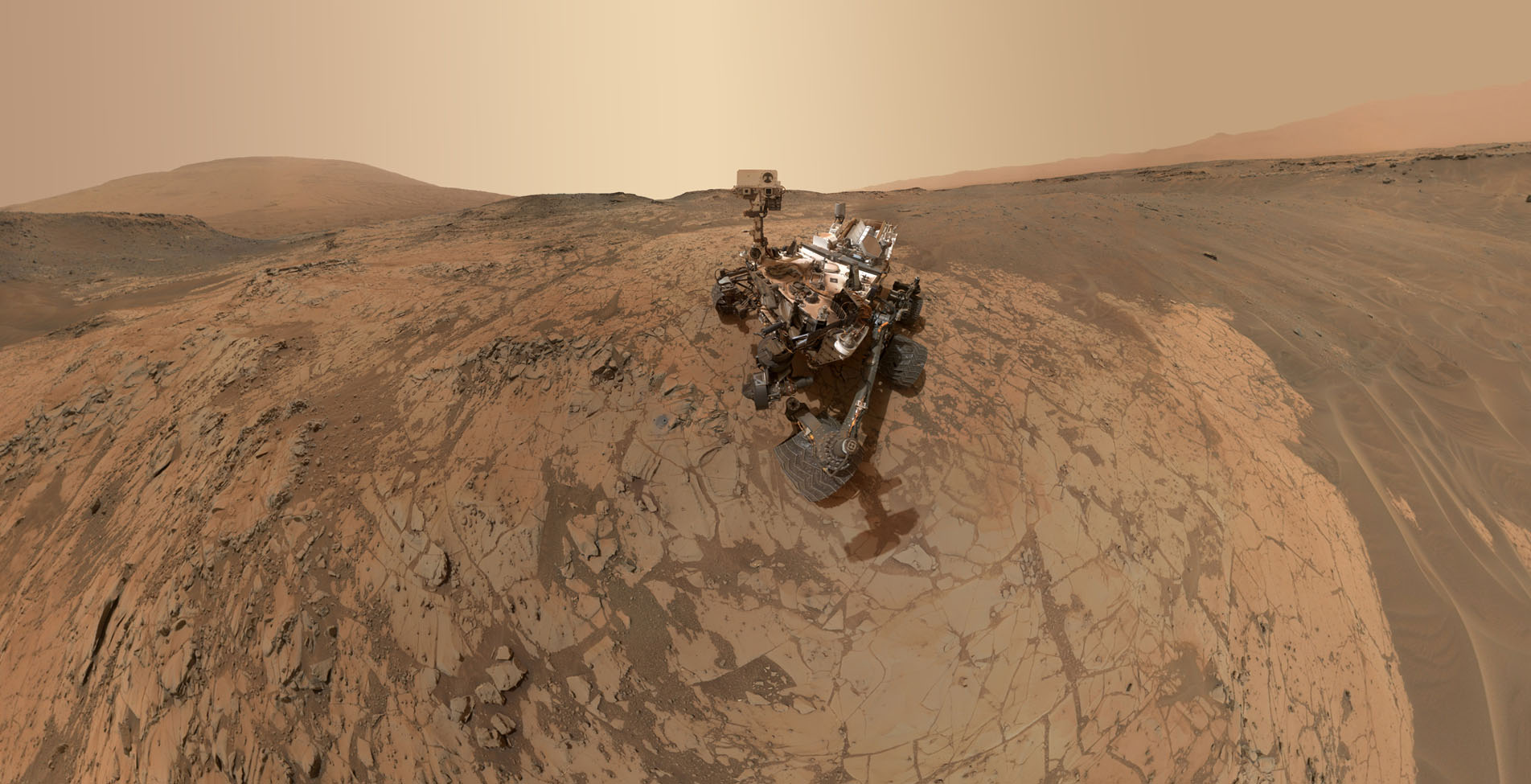
 The lower density might come into play when constructing enclosures for future settlers.
The lower density might come into play when constructing enclosures for future settlers. Below that . . . selfie!

---

t-dub
Vapor Sloth
While scanning the southern sky as part of the Dark Energy Survey, researchers snapped this shot of comet Lovejoy. The image was captured using the 570-megapixel Dark Energy Camera, the world’s most powerful digital camera. Each of the rectangular shapes represents one of the 62 individual fields of the camera.
At the time this image was taken, the comet was passing about 51 million miles from Earth – a short distance for the Dark Energy Camera, which is sensitive to light up to 8 billion light years away. The comet’s center is a ball of ice roughly three miles across, and the visible head of the comet is a cloud of gas and dust about 400,000 miles in diameter.
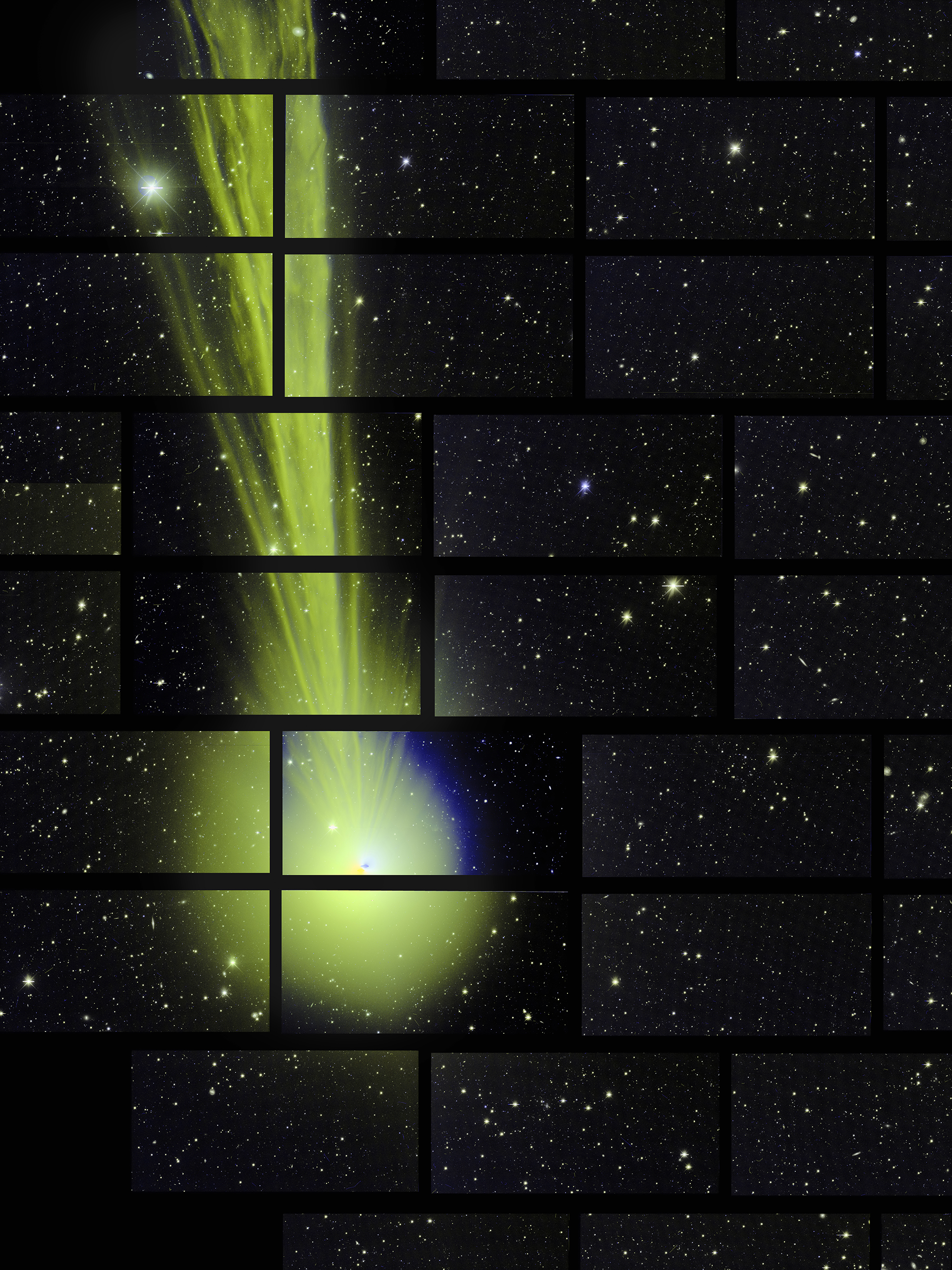
And in other news . . .
This single frame Rosetta navigation camera image was taken from a distance of 15.3 km from the surface of Comet 67P/Churyumov-Gerasimenko

At the time this image was taken, the comet was passing about 51 million miles from Earth – a short distance for the Dark Energy Camera, which is sensitive to light up to 8 billion light years away. The comet’s center is a ball of ice roughly three miles across, and the visible head of the comet is a cloud of gas and dust about 400,000 miles in diameter.

And in other news . . .
This single frame Rosetta navigation camera image was taken from a distance of 15.3 km from the surface of Comet 67P/Churyumov-Gerasimenko

momofthegoons
vapor accessory addict
Last edited:
t-dub
Vapor Sloth
We have long known that light can act as a particle or a wave, depending on the experiment. But for the first time scientists, whoever they are, have captured a glimpse of light acting as both a wave and particles at the same time. This strange behavior is a consequence of quantum mechanics, bizarre rules of physics that govern the behavior of subatomic particles.
To catch this particle-wave duality in real time, Carbone and his colleagues shot a beam of laser light at charged electrons inside a nanoscale wire, giving the charged particles a boost in energy. This energy bump caused the particles to vibrate, which, in turn, created an electromagnetic field that forced the light to go back and forth along the wire.
When the two waves traveling in opposite directions collided, they formed a stationary wave.
From there, the research team fired electrons at the wire. As the electrons approached the wire, the electrons bumped into the light particles, or photons, in the standing wave, which then changed the speed of the electrons. But the photons changed speed (sped up or slowed down) in finite amounts called quanta or "packets" of energy, according to the statement. These packets of energy show that the light was acting as a particle.
Because the whole interaction was caught in images by an ultrafast electron microscope, the lightning-quick changes in electron speed were captured in real time.
Here, the wave nature is demonstrated in the wavy upper portion, while the particle behavior is revealed below, in the outlines showing energy quantization.

To catch this particle-wave duality in real time, Carbone and his colleagues shot a beam of laser light at charged electrons inside a nanoscale wire, giving the charged particles a boost in energy. This energy bump caused the particles to vibrate, which, in turn, created an electromagnetic field that forced the light to go back and forth along the wire.
When the two waves traveling in opposite directions collided, they formed a stationary wave.
From there, the research team fired electrons at the wire. As the electrons approached the wire, the electrons bumped into the light particles, or photons, in the standing wave, which then changed the speed of the electrons. But the photons changed speed (sped up or slowed down) in finite amounts called quanta or "packets" of energy, according to the statement. These packets of energy show that the light was acting as a particle.
Because the whole interaction was caught in images by an ultrafast electron microscope, the lightning-quick changes in electron speed were captured in real time.
Here, the wave nature is demonstrated in the wavy upper portion, while the particle behavior is revealed below, in the outlines showing energy quantization.

grokit
well-worn member
"To say that the Skunk Works is on the verge of changing the world is an understatement"
I love that the name of their famed aerospace division is skunk works
Lockheed Martin Claims Sustainable Fusion Is Within Its Grasp
By Wayne Rash | Posted 2015-03-04
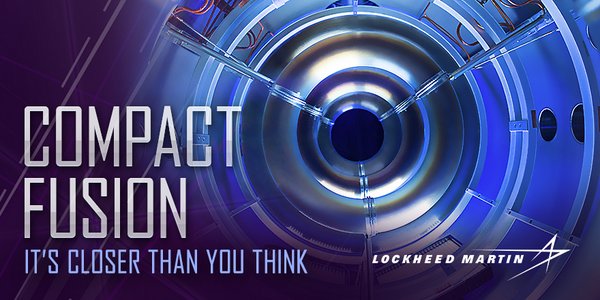
Imagine a source of electrical power that uses water for fuel, produces byproducts that are totally safe and releases no air pollution.
Then imagine that once it's up and running, it'll be so portable that an entire power plant could fit into the cargo hold of an airplane. Now, imagine that it'll be running in prototype form in five years and operating commercially in ten.
It sounds like science fiction, but it's not. However, it is being built by a group of scientists and engineers in a place that's legendary for doing what was thought to be impossible in a remarkably short amount of time. This place, which is part of Lockheed Martin's aeronautics business, is popularly known as the Skunk Works.
This is the same Skunk Works created by the near-mythical Kelly Johnson, an aerospace engineer able to head teams that built the SR-71 Blackbird reconnaissance jet years before any other organization even thought Mach-3 flight was possible.
The Skunk Works, which was started during World War II, has created some of the most iconic aircraft ever built, ranging from the then-revolutionary P-38 fighter to the high-altitude U2 reconnaissance. Current projects include the Falcon HTV-2 hypersonic aircraft, which flies at a top speed of 13,000 miles per hour, fast enough to take it from New York to Los Angeles in 12 minutes.
The Skunk Works is able to create its ground-breaking technological advances through a combination of rapid prototyping, appropriate scalability, and a management environment that fosters innovation without traditional limits. One other feature of the Skunk Works is its practice of being very quiet about its work until it reaches a point at which the group is certain that its project actually works.
This is why the Skunk Works and its new Compact Fusion project have the potential to be so revolutionary—by succeeding where so many other efforts have fallen short after more than a half-century of research.
Yes it's true that such claims have been made and debunked before. Many people remember when a pair of electrochemists, Martin Fleischmann and Stanly Pons claimed in 1989 that they had discovered "cold fusion," a way to make hydrogen atoms fuse at room temperatures and pressures. The researchers' claims were soon rejected by other scientists who couldn't repeat the experimental results that Fleischmann and Pons reported.
The U.S. government has funded fusion research projects for decades without producing the design of an economical fusion reactor.
Unlike earlier fusion projects, this effort has the results of all that research behind it as well as the Skunk Works' physics and engineering know-how to create a working prototype. The Lockheed Martin project is designed to take advantage of the practice of rapid prototyping that the Skunk Works pioneered by building relatively small, easily improved incremental projects that lead to a finished product that actually works.
Those relatively small projects also mean that each iteration is built quickly by relatively few people. Because it can be done quickly, the rapid development also means that choices can be less conservative; they can cost less and alternatives are easier to develop. This rapid progress provides a sort of developmental momentum that helps propel innovation.
The Compact Fusion reactor makes use of a magnetic bottle created by superconducting magnets to contain the temperatures that can reach hundreds of millions of degrees. This magnetic bottle can then release some of the heat so that it can be used for power generation.
The fusion is powered by a combination of two isotopes of Hydrogen, Deuterium and Tritium, both of which occur in nature and which can be extracted from water. "Our studies show that a 100 MW system would only burn less than 20 kg of fuel in an entire year of operation," a Lockheed Martin spokesperson told eWEEK. "Tritium fuel is continually bred within the reactor wall and fed back into the reactor along with deuterium gas to sustain the reactions."
In other words, the fusion reactor creates most of its own fuel as part of its operation. The Deuterium gas is simply a normal hydrogen atom with an extra neutron, creating what is sometimes called "heavy hydrogen." Deuterium can be extracted from the hydrogen obtained from electrolysis of water. This may sound complicated, but it's a process that has been routinely performed in college physics projects.
While the fusion reactor does create a radioactive byproduct, it's recycled for use in the reactor itself. There is no radioactive waste problem such as exists with nuclear fission power plants. "The waste footprint is orders of magnitude less than coal plants which require huge landfills to contain the toxic ash and sludge wastes," the spokesperson said in an email.
"A typical coal plant generates over 100,000 tons of ash and sludge containing toxic metals and chemicals each year. The first generation of fusion reactors will run on Deuterium-Tritium fuel, but successive generations would use fuels that could eliminate the radioactivity altogether," she said.
Currently Lockheed Martin is in the process of testing a magnetic confinement bottle, where the Skunk Works team has apparently made significant progress. In terms of how a fusion reactor would be created, the magnetic bottle is the primary hurdle.
If that's accomplished successfully most of the science and engineering is known. However, that doesn't mean that building the prototype fusion reactor is a done deal. Lockheed Martin is looking for industry partners to help develop the Compact Fusion reactor into a real product.
The goal is to create a fusion reactor that can generate heat to use in existing power plants, where the reactor would replace existing fossil fuel combustion. This means that existing power generation and distribution infrastructure would be retained, which will dramatically reduce the cost of implementation and dramatically speed up deployment.
The existence of cheap, portable power will transform the world in many ways. A statement from the company envisions ships and aircraft with unlimited range, spacecraft that could reduce the travel time to Mars to less than a month.
Perhaps most important to the most people, it could bring vast amounts of power to anywhere on earth, providing among other things economical water desalination to developing regions of the globe, which are not only poor, but short of clean water, by removing energy scarcity as an insurmountable problem.
If Lockheed Martin can pull this off, and given the reputation of the Skunk Works for routinely doing the impossible, I suspect it will, the results will be transformative.
While it doesn't mean free energy, it does mean that the cost of nearly unlimited energy is very low, and with unlimited energy, there's no end to what can be accomplished. To say that the Skunk Works is on the verge of changing the world is an understatement. This development could well define the future.
http://www.reddit.com/r/worldnews/comments/2y21yl/lockheed_martin_claims_sustainable_fusion_is/
I love that the name of their famed aerospace division is skunk works

Lockheed Martin Claims Sustainable Fusion Is Within Its Grasp
By Wayne Rash | Posted 2015-03-04

Imagine a source of electrical power that uses water for fuel, produces byproducts that are totally safe and releases no air pollution.
Then imagine that once it's up and running, it'll be so portable that an entire power plant could fit into the cargo hold of an airplane. Now, imagine that it'll be running in prototype form in five years and operating commercially in ten.
It sounds like science fiction, but it's not. However, it is being built by a group of scientists and engineers in a place that's legendary for doing what was thought to be impossible in a remarkably short amount of time. This place, which is part of Lockheed Martin's aeronautics business, is popularly known as the Skunk Works.
This is the same Skunk Works created by the near-mythical Kelly Johnson, an aerospace engineer able to head teams that built the SR-71 Blackbird reconnaissance jet years before any other organization even thought Mach-3 flight was possible.
The Skunk Works, which was started during World War II, has created some of the most iconic aircraft ever built, ranging from the then-revolutionary P-38 fighter to the high-altitude U2 reconnaissance. Current projects include the Falcon HTV-2 hypersonic aircraft, which flies at a top speed of 13,000 miles per hour, fast enough to take it from New York to Los Angeles in 12 minutes.
The Skunk Works is able to create its ground-breaking technological advances through a combination of rapid prototyping, appropriate scalability, and a management environment that fosters innovation without traditional limits. One other feature of the Skunk Works is its practice of being very quiet about its work until it reaches a point at which the group is certain that its project actually works.
This is why the Skunk Works and its new Compact Fusion project have the potential to be so revolutionary—by succeeding where so many other efforts have fallen short after more than a half-century of research.
Yes it's true that such claims have been made and debunked before. Many people remember when a pair of electrochemists, Martin Fleischmann and Stanly Pons claimed in 1989 that they had discovered "cold fusion," a way to make hydrogen atoms fuse at room temperatures and pressures. The researchers' claims were soon rejected by other scientists who couldn't repeat the experimental results that Fleischmann and Pons reported.
The U.S. government has funded fusion research projects for decades without producing the design of an economical fusion reactor.
Unlike earlier fusion projects, this effort has the results of all that research behind it as well as the Skunk Works' physics and engineering know-how to create a working prototype. The Lockheed Martin project is designed to take advantage of the practice of rapid prototyping that the Skunk Works pioneered by building relatively small, easily improved incremental projects that lead to a finished product that actually works.
Those relatively small projects also mean that each iteration is built quickly by relatively few people. Because it can be done quickly, the rapid development also means that choices can be less conservative; they can cost less and alternatives are easier to develop. This rapid progress provides a sort of developmental momentum that helps propel innovation.
The Compact Fusion reactor makes use of a magnetic bottle created by superconducting magnets to contain the temperatures that can reach hundreds of millions of degrees. This magnetic bottle can then release some of the heat so that it can be used for power generation.
The fusion is powered by a combination of two isotopes of Hydrogen, Deuterium and Tritium, both of which occur in nature and which can be extracted from water. "Our studies show that a 100 MW system would only burn less than 20 kg of fuel in an entire year of operation," a Lockheed Martin spokesperson told eWEEK. "Tritium fuel is continually bred within the reactor wall and fed back into the reactor along with deuterium gas to sustain the reactions."
In other words, the fusion reactor creates most of its own fuel as part of its operation. The Deuterium gas is simply a normal hydrogen atom with an extra neutron, creating what is sometimes called "heavy hydrogen." Deuterium can be extracted from the hydrogen obtained from electrolysis of water. This may sound complicated, but it's a process that has been routinely performed in college physics projects.
While the fusion reactor does create a radioactive byproduct, it's recycled for use in the reactor itself. There is no radioactive waste problem such as exists with nuclear fission power plants. "The waste footprint is orders of magnitude less than coal plants which require huge landfills to contain the toxic ash and sludge wastes," the spokesperson said in an email.
"A typical coal plant generates over 100,000 tons of ash and sludge containing toxic metals and chemicals each year. The first generation of fusion reactors will run on Deuterium-Tritium fuel, but successive generations would use fuels that could eliminate the radioactivity altogether," she said.
Currently Lockheed Martin is in the process of testing a magnetic confinement bottle, where the Skunk Works team has apparently made significant progress. In terms of how a fusion reactor would be created, the magnetic bottle is the primary hurdle.
If that's accomplished successfully most of the science and engineering is known. However, that doesn't mean that building the prototype fusion reactor is a done deal. Lockheed Martin is looking for industry partners to help develop the Compact Fusion reactor into a real product.
The goal is to create a fusion reactor that can generate heat to use in existing power plants, where the reactor would replace existing fossil fuel combustion. This means that existing power generation and distribution infrastructure would be retained, which will dramatically reduce the cost of implementation and dramatically speed up deployment.
The existence of cheap, portable power will transform the world in many ways. A statement from the company envisions ships and aircraft with unlimited range, spacecraft that could reduce the travel time to Mars to less than a month.
Perhaps most important to the most people, it could bring vast amounts of power to anywhere on earth, providing among other things economical water desalination to developing regions of the globe, which are not only poor, but short of clean water, by removing energy scarcity as an insurmountable problem.
If Lockheed Martin can pull this off, and given the reputation of the Skunk Works for routinely doing the impossible, I suspect it will, the results will be transformative.
While it doesn't mean free energy, it does mean that the cost of nearly unlimited energy is very low, and with unlimited energy, there's no end to what can be accomplished. To say that the Skunk Works is on the verge of changing the world is an understatement. This development could well define the future.
http://www.reddit.com/r/worldnews/comments/2y21yl/lockheed_martin_claims_sustainable_fusion_is/
Last edited:
Imagine what this could do for the portable vaporizer market! Is it weird that the only thing I take away from all this is the potential of new ways to get high?The existence of cheap, portable power will transform the world in many ways. A statement from the company envisions ships and aircraft with unlimited range, spacecraft that could reduce the travel time to Mars to less than a month.


Last edited:
t-dub
Vapor Sloth
Since we are talking about Lockheed Martin . . . 
Watch out for this new 30 kilowatt fiber laser weapon that disabled this truck from more than a mile away. The demonstration marked the first field testing of an integrated 30-kilowatt, single-mode fiber laser weapon system prototype. Through a technique called spectral beam combining, multiple fiber laser modules form a single, powerful, high-quality beam that provides greater efficiency and lethality than multiple individual 10-kilowatt lasers used in other systems.

---


Watch out for this new 30 kilowatt fiber laser weapon that disabled this truck from more than a mile away. The demonstration marked the first field testing of an integrated 30-kilowatt, single-mode fiber laser weapon system prototype. Through a technique called spectral beam combining, multiple fiber laser modules form a single, powerful, high-quality beam that provides greater efficiency and lethality than multiple individual 10-kilowatt lasers used in other systems.

---

Last edited:
grokit
well-worn member
Okay wasn't this a super-villain weapon in one of the star trek or superman movies?multiple fiber laser modules form a single, powerful, high-quality beam that provides greater efficiency and lethality
t-dub
Vapor Sloth
Hey man just hook this thing to the fusion reactor you showed us then put it on a AC-130U Spooky, also made by Lockheed Martin, and you have a floating platform to laze just about anything.Okay wasn't this a super-villain weapon in one of the star trek or superman movies?
ilikechinesefood
Kitty Meowmein
I believe it was 007. It was that evil cat petting dude...or did he have the piranhas?Okay wasn't this a super-villain weapon in one of the star trek or superman movies?


